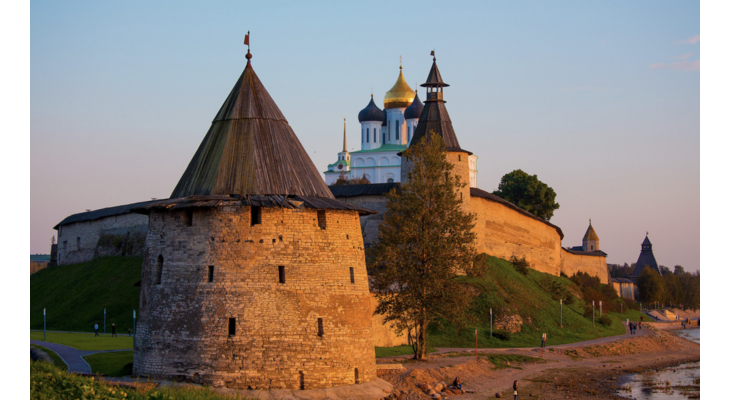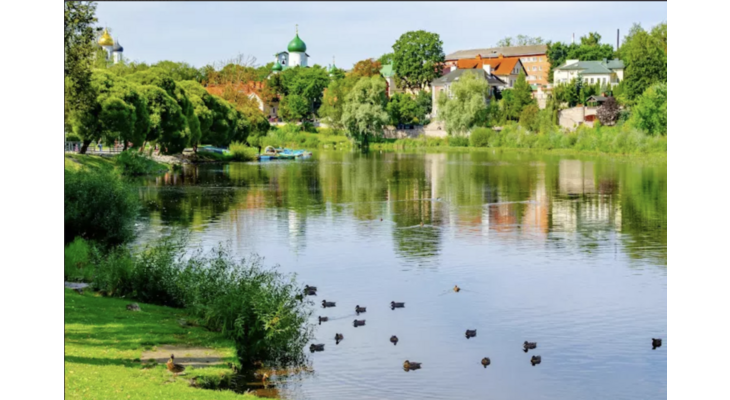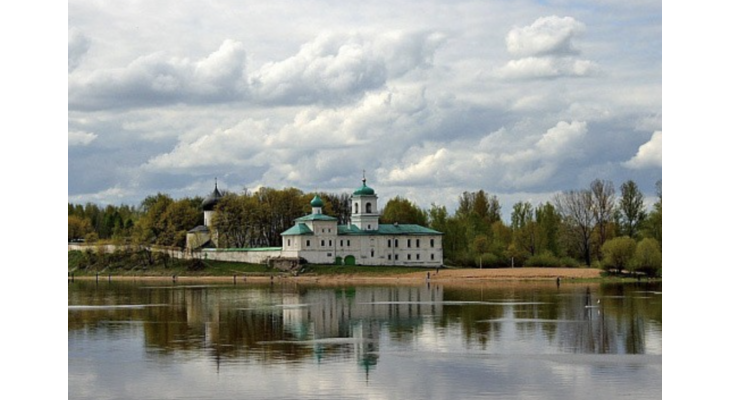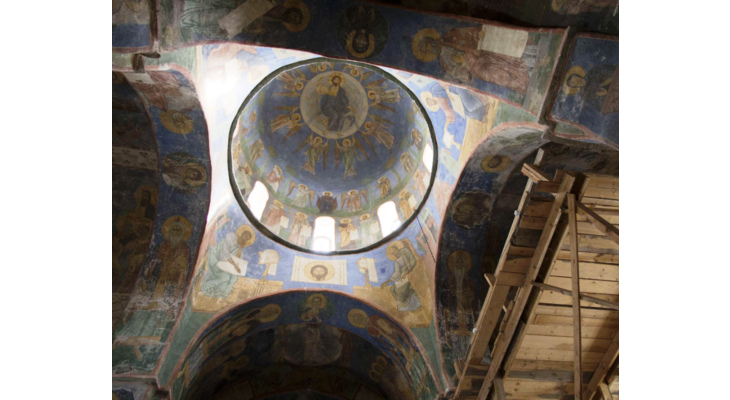One of the northern ancient cities of Russia, Pskov, was founded in 903, although settlements existed on these lands over 2000 years ago. For many years, Pskov and its older brother, Veliky Novgorod,
stood guard over the northwestern borders of Russia, repelling attacks from German crusaders. But Pskov is not only interesting because of its rich history. Let's see what else this city offers.
Just as you can't avoid Red Square in Moscow, you can't bypass the Pskov Kremlin. Not only because of its size of 35 hectares but also due to its importance to the city's architectural landscape. Mentions of the construction of the first wooden and earthen fortifications date back to the 8th century. The Kremlin includes many buildings and defensive towers, among which is the Vlasyev Tower. The wooden shingle tower's observation platform, located approximately at the level of the 6-7th floor, offers an excellent view of the cathedral, river, and city.
Dovmont's town is a fairly large construction (15 hectares) added in the 13th century to further strengthen the Kremlin. Today, this unique archaeological monument is part of the Pskov Kremlin – the core of the Pskov fortress, but it has its own history. It is named after Prince Dovmont, later canonized by the Russian Church. Dovmont ruled in Pskov in the second half of the 13th century and not only built the city but also became famous for numerous victories over the Lithuanians and especially the Germans. During his reign, the Pskov land "earned" independence from the Novgorod Republic. At the end of the 17th century, by the order of Peter I, the buildings were dismantled, and fortifications were erected in their place, necessary for the city's defense in the Northern War. In 1954, their remains were discovered.
Pskov has quite a few parks and even a Botanical Garden. But if you have only a few days and the weather is favorable, it is worth visiting Kuopio Park, named after the Finnish twin city of Pskov.
The park is an extension of the Pskova River Park and stretches from the pedestrian bridge in Brody (known since the 16th century) to the Kuznetsky Bridge. Finnish architects participated in the creation of the park. It abounds in greenery and offers beautiful views of historical monuments.
In Pskov, history is impossible to escape even in nature. On the other side of the Pskova River, you can see the rocky cliffs of Gremyachaya Mountain, the Church of Cosmas and Damian, the ruins of the 17th-century chambers, and the building of the former tannery. Nearby are several other remarkable structures, including the water mill of F.O. Kukka and the stone garden. As in many other parts of the city, you can see fragments of the Okolny town walls in the park. Also here are the ruins of the Church of the Annunciation, Bobovkin's chambers, and the Church of Paraskeva Pyatnitsa. A special symbol of the park has become the white weeping willows.
In Pskov, everything is quite close, and directly from the park, you can get to Gremyachaya Tower, and from there to other buildings related to the Okolny town, an important part of the city's historic center. The 20-meter tower is divided into six levels. In ancient times, cannons stood on each of them. The first floor is equipped with an underground passage leading to the Pskova River bank.
The Okolny town is famous for the impressive size of its walls, stretching 7 km, built around the mid-15th century to protect the city. The builders considered all possible details, including underground passages and hidden ammunition depots. Of the 16 towers, only half have survived, but among the ruins, you can find loopholes and embrasures. On the territory of the complex, you can visit other interesting structures such as Pogankin Chambers, where icons, weapons, and money from the 13th-17th centuries are kept, as well as the museum of V.A. Kaverin's novel "Two Captains" and the Spegalsky museum-apartment. During a tour of the Okolny town, special attention should be paid to the Pokrovskaya Tower, which held back enemies for over a hundred years.
A bit away from the center of Pskov, you can reach several interesting places, and we will tell you about one of them. Mirozhsky Monastery is located a few kilometers from the Pskov Kremlin on the left bank of the Velikaya River, where the small Mirozhka River flows into it (from the word "mreži" – "nets", fishing has been practiced here since ancient times). Mirozhsky Monastery is an ancient Pskov monastery.
Legend has it that the first settlement visited by Princess Olga was in this area. The monastery was located in a rather dangerous place – outside the fortress walls. Being open to enemy raids, it was the first to receive enemy blows. Due to such specific positioning, the monastery was more of a fortress and was not suitable for those seeking a place of prayer in peace and seclusion. However, by a happy coincidence, unique 12th-century frescoes, made by Byzantine masters before the Mongol period, can be seen in the oldest surviving church of the monastery, the Transfiguration Cathedral.
In ancient times, the monastery was not only a religious but also a cultural center of the city. It housed a rich library, as well as an icon painting workshop that still operates today. In the copyist workshop, texts of high historical and cultural importance were copied, particularly "The Tale of Igor's Campaign."
Today, in addition to the icon painting workshop, there is a small candle factory on the territory, producing candles using a 300-year-old technology. Every week, the monastery feeds pilgrims and the needy.
Several dozen monks permanently reside in the male monastery. Before going here, it is advisable to call and arrange a visit, as the Transfiguration Cathedral is open to visitors only on certain days. A request for a tour can be left on the monastery's website.













